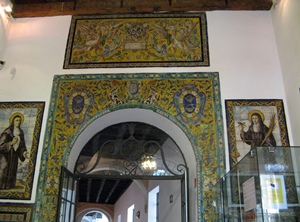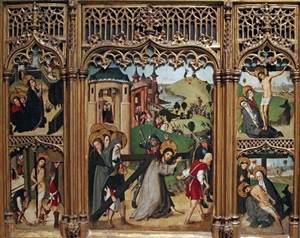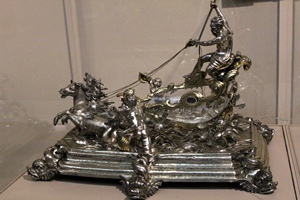The museum was a fairly long walk from the Alcazar, but this gave us a chance to experience more of the old town. On arriving at the museum we found that it was surprisingly affordable (only 1.50 Euros) and not even slightly crowded. According to our guide book photography was against the rules, but when we asked, we were told that it was fine as long as we didn’t take flash pictures. Cool. I guess it never hurts to ask.
Our visit turned out to be on the rushed side, as we only had about an hour until the museum closed. So we started by powering our way through the older paintings.
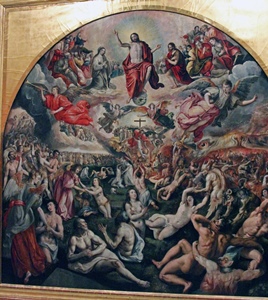
Last Judgment, Martín de Vos (1570) Med Lrg |
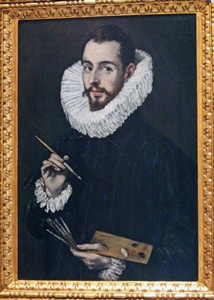
Portrait of Jorge Manuel, El Greco (1600) Med Lrg |
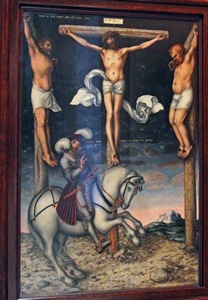
The Calvary, Lucas Cranach (1538) Med Lrg |
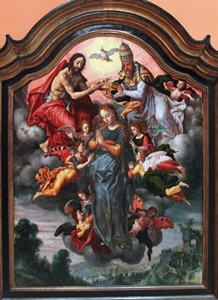
Coronation of the Virgin, Pieter Aertsen Med Lrg |
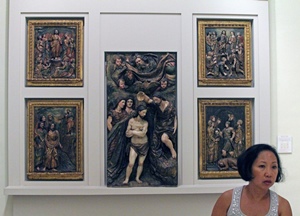
Nella and Altar of St. John the Baptist, Miguel Adan (1592-94) Med Lrg Xlg |
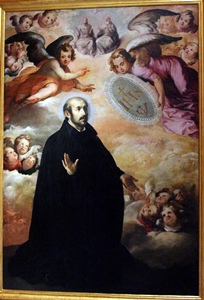
Glorification of St. Ignatius of Loyola, Francisco Herrera el Viejo (1622) Med Lrg |
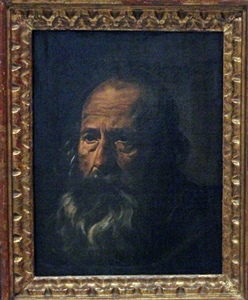
Head of an Apostle, Diego Velázquez (1620) Med Lrg |
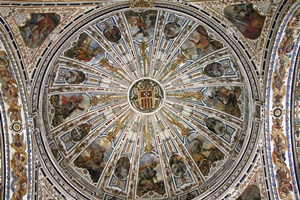
Dome Med Lrg Xlg |
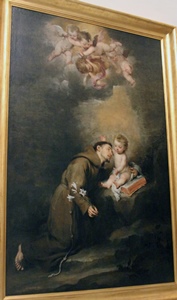
St. Anthony of Padua with the Child, Bartolomé Esteban Murillo (1668-69) Med Lrg Xlg |
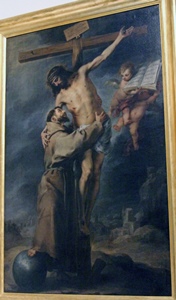
St. Francis Embracing Christ, Bartolomé Esteban Murillo (1668-69) Med Lrg Xlg |
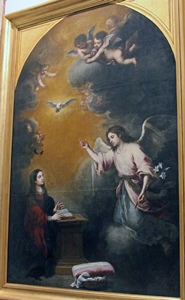
Annunciation, Bartolomé Esteban Murillo (1668) Med Lrg Xlg |
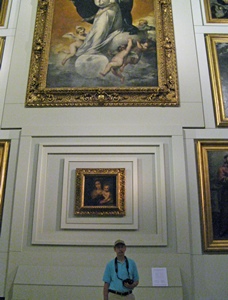
Bob and Wall of Murillo Paintings Med Lrg |
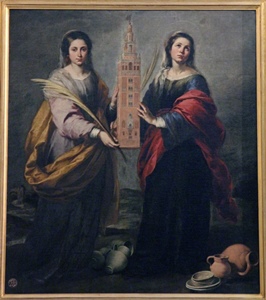
St. Justa and St. Rufina, Bartolomé Esteban Murillo (1665-66) Med Lrg |
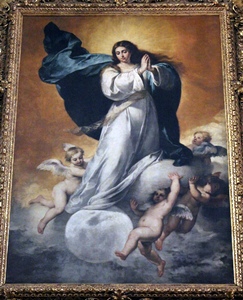
The Immaculate Conception, Bartolomé Esteban Murillo (ca. 1652) Med Lrg |
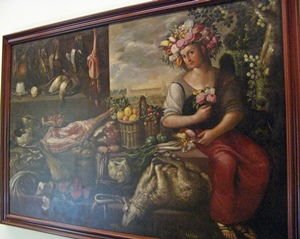
Spring, Francisco Barrera (1638) Med Lrg |
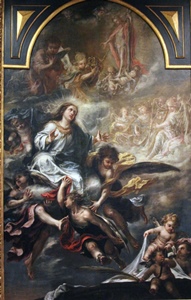
The Assumption of the Virgin, Juan de Valdés Leal (1672) Med Lrg Xlg |
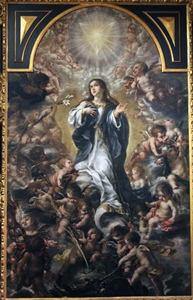
The Immaculate Conception, Juan de Valdés Leal (1672) Med Lrg Xlg |
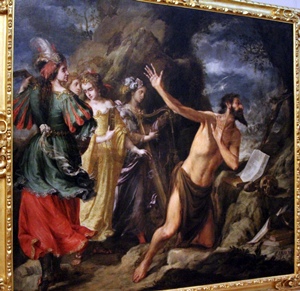
The Temptation of St. Jerome, Juan de Valdés Leal (1657) Med Lrg |
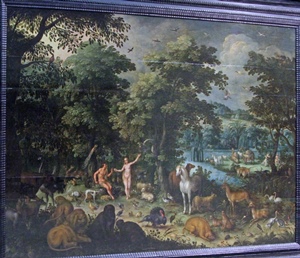
Earthly Paradise, Jan Brueghel the Elder (1610) Med Lrg |
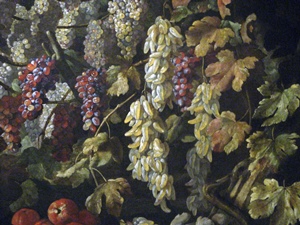
Still Life with Grapes and Apples, Giambattista Ruoppolo (1670) Med Lrg |
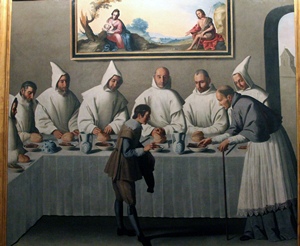
St. Hugh in the Refectory, Francisco de Zurbarán (1655) Med Lrg Xlg |
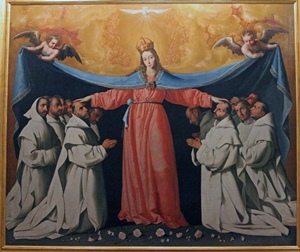
The Virgin of the Caves, Francisco de Zurbarán (1655) Med Lrg |
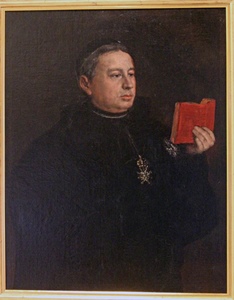
Portrait of Canon Mr. José Duaso y Latre, Francisco de Goya (1824) Med Lrg |
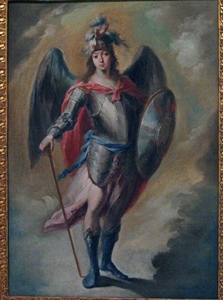
Archangel St. Michael, Juan de Espinal (1784) Med Lrg |
While viewing the paintings we also found a number of sculptures, apparently made from painted clay, which were also religiously themed. In addition, well-executed decorative objects were to be seen here and there.
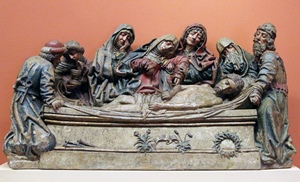
Crying Over the Dead Christ, Pedro Millan (1490) Med Lrg Xlg |
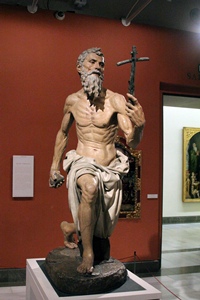
St. Jerome, Pietro Torrigiano (1525) Med Lrg Xlg |
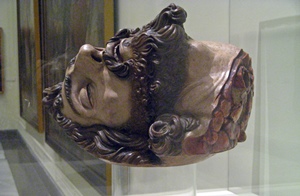
Head of St. John the Baptist, Gaspar Núñez Delgado (1591) Med Lrg |
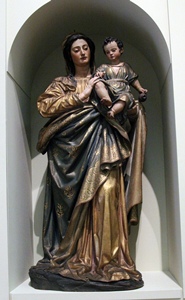
Virgin of the Caves, Juan de Mesa (1623) Med Lrg Xlg |
The newer paintings were generally related to more secular subjects of personal interest to Spaniards.
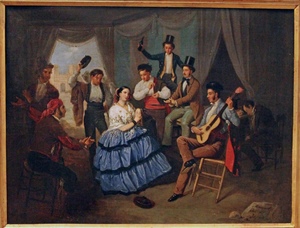
Dance in a Fair Tent, Manual Cabral Bejarano (19th C.) Med Lrg |
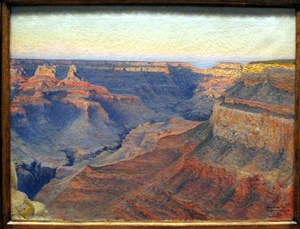
Gran Cañon de Arizona, José Arpa Perea (1920) Med Lrg |
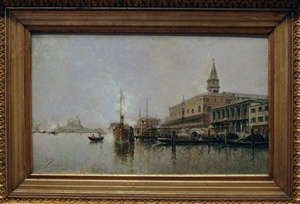
Venice Canal, Rafael Senet (1885) Med Lrg Xlg |
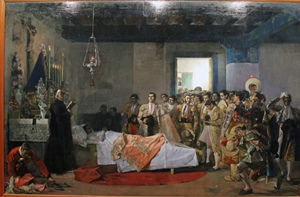
Death of a Maestro, José Villegas Cordero (1913) Med Lrg Xlg |
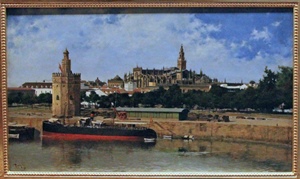
Vista de Sevilla, Nicolás Jiménez Alpériz (1893) Med Lrg |
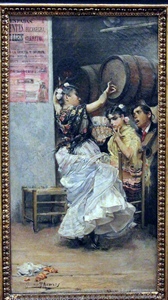
Dancing Bulerías, José Garcia Ramos (1884) Med Lrg |
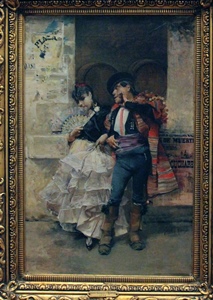
Sevillian Dance Couple, José Garcia Ramos (1882-1900) Med Lrg |
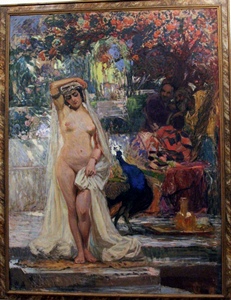
Chaste Susana, Gonzalo Bilbao (ca. 1900) Med Lrg |
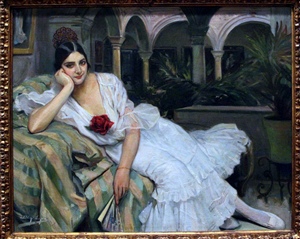
Sevillian Woman in Her Patio, Diego Lopez (1918) Med Lrg |
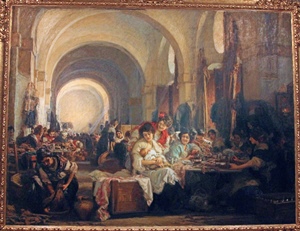
Cigar Makers, Gonzalo Bilbao (1915) Med Lrg Xlg |
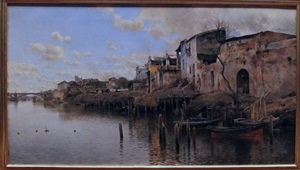
Triana, Emilio Sánchez Perrier (1888-90) Med Lrg |
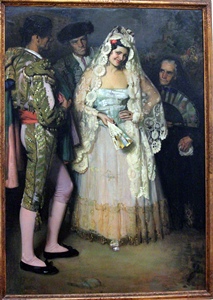
Young Woman with Mantilla and Bullfighters, Francisco Soria Aedo (20th C.) Med Lrg Xlg |
